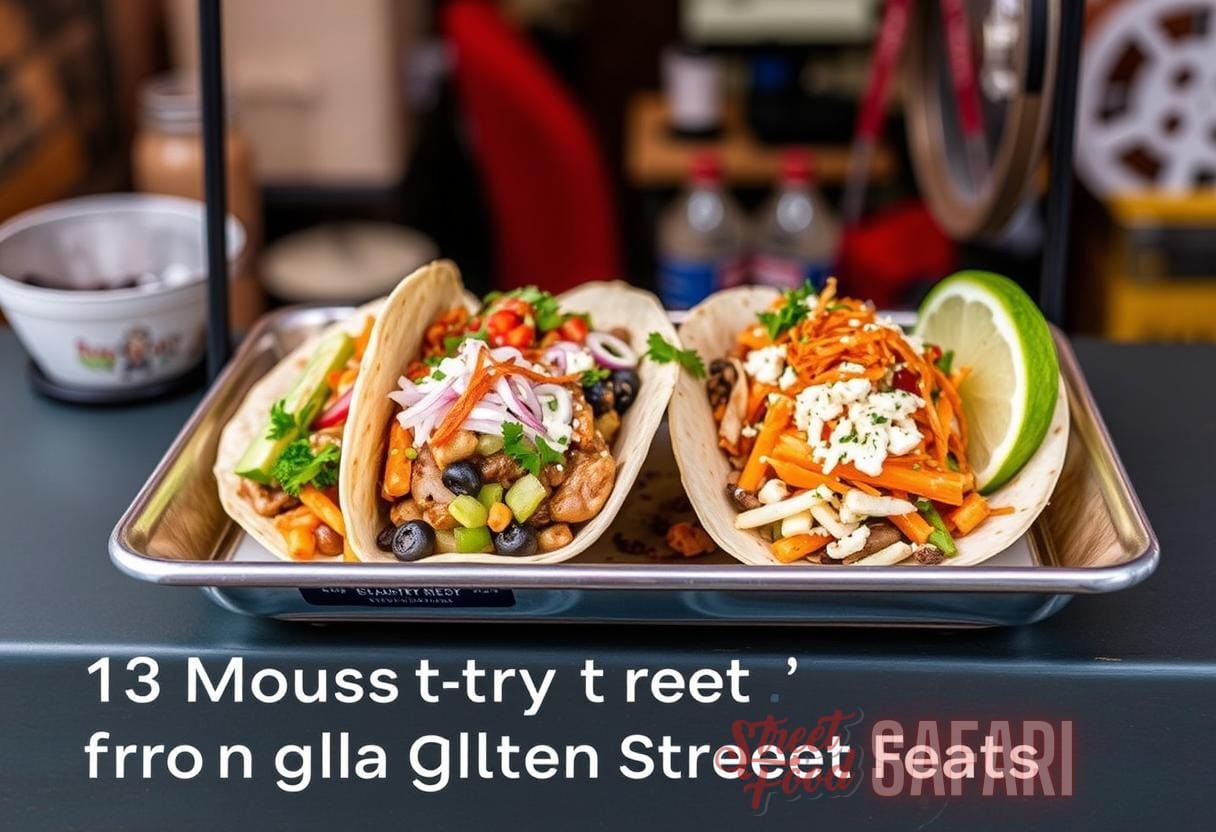Introduction
Street food has always been a magnet for food lovers, tantalizing their taste buds with delectable bites of culinary treasures. From Thai pad thai to Indian samosas, Mexican tacos to Turkish doner kebabs, the world of street gems is a fascinating blend of diverse flavors, vibrant spices, and mouthwatering aromas. But have you ever wondered about the science and history behind these urban culinary delights? In this article, we unravel the alchemy of street food delights, exploring the fascinating world of street eats and how they have evolved over time.
The Science of Street Food
Street food is not just about the mouthwatering flavors and textures; it is also an intersection of science and art. Let’s delve into the scientific aspects that make street gems so special:
1. Maillard Reaction: The Secret Behind Deliciousness
The Maillard reaction is a chemical reaction that occurs when proteins and sugars are exposed to high heat, resulting in the browning and creation of delicious flavors. This reaction is responsible for the mouthwatering aroma and deep, savory flavors found in many street food favorites. Whether it’s the seared edges of a scallion pancake or the caramelization on the surface of grilled meat, the Maillard reaction is a crucial element that transforms ordinary ingredients into extraordinary street gems.
2. Umami: The Fifth Taste Sensation
Umami, often called the fifth taste sensation, is a Japanese term meaning “pleasant, savory taste.” It is a deeply satisfying flavor present in many street food dishes. Umami is typically derived from ingredients such as soy sauce, fermented fish sauce, mushrooms, and aged cheeses. By incorporating umami-rich ingredients, street food vendors elevate the flavor profile of their dishes, making them irresistible and addictive.
3. Food Texture: The Playful Dance in Your Mouth
Texture is a crucial aspect of any memorable dish, and street food is no exception. Whether it’s the crispy exterior and soft interior of a falafel or the chewiness of a noodle dish, texture adds another layer of enjoyment to the overall street food experience. Vendors often experiment with different cooking techniques to achieve the perfect balance of textures, creating a delightful dance of sensations in your mouth.
The History of Street Food
Street food has a rich history that dates back centuries. Let’s take a journey through time and explore the origins of street eats:
1. Ancient Origins

The concept of street food can be traced back to ancient civilizations. In ancient Rome, for example, street vendors known as “tabernarii” sold a variety of snacks and cooked food, catering to the bustling city dwellers. Across the world, in ancient China, street food was considered an integral part of the daily lives of the common people, with vendors selling steamed buns, dumplings, and noodle dishes.
2. Middle Ages and Renaissance
During the Middle Ages and Renaissance periods, street food continued to thrive. In Europe, itinerant food sellers, known as “street peddlers” or “street hawkers,” roamed the streets, selling a range of items from roasted chestnuts to pies and sausages. These street vendors played an essential role in providing sustenance to the masses, especially in urban areas where fresh ingredients were not readily available.
3. Colonial Influence and Globalization
The period of European colonization during the 15th to 19th centuries had a significant influence on street food around the world. With the establishment of trade routes, cultural exchange, and migration, street food began to evolve and adapt to new ingredients and flavors. This period also saw the introduction of staple street food items like curry in India, siu mai in China, and tacos in Mexico, which have since become iconic street gems.
Regional Street Delights
Each region boasts its own unique street delights. Let’s embark on a virtual culinary journey and explore the famous street gems from different parts of the world:
1. Asia
– Thai Pad Thai: This iconic Thai street food dish is a stir-fried noodle dish, typically made with rice noodles, shrimp, tofu, bean sprouts, tamarind paste, and peanuts. It is a harmonious blend of sweet, sour, and spicy flavors that epitomizes the vibrant street food scene in Thailand. [^1^] – Indian Samosas: Originating from India, samosas are triangular pastries filled with a savory mixture of potatoes, peas, spices, and sometimes meat. They are deep-fried until golden brown and are often served with chutney dipping sauces. Samosas are a popular street food snack in India and are beloved by locals and tourists alike. – Japanese Takoyaki: Takoyaki is a popular Japanese street food snack made from a batter of wheat flour, dashi broth, and diced octopus. The batter is poured into special round molds, cooked until golden brown, and then topped with mayonnaise, takoyaki sauce, bonito flakes, and green onions. These fluffy and flavorful octopus balls are a must-try when exploring the vibrant street food scene in Japan.2. Middle East
– Turkish Doner Kebabs: Doner kebabs are a Middle Eastern street food staple that has gained worldwide popularity. Succulent layers of marinated meat (usually lamb or chicken) are stacked on a vertical spit and slow-roasted, resulting in tender, juicy meat. The thinly sliced meat is then served in a warm pita bread with a variety of toppings and sauces, making it a satisfying and delicious street food meal. – Egyptian Koshary: Koshary is a beloved Egyptian street food dish consisting of layers of rice, lentils, macaroni, and chickpeas, topped with a flavorful tomato sauce and crispy fried onions. This hearty and affordable dish is a fusion of Egyptian, Indian, and Italian flavors, making it a true street food gem that can be found on almost every corner in Egypt. – Israeli Falafel: Falafel is a vegetarian Middle Eastern street food delicacy made from ground chickpeas or fava beans, mixed with herbs and spices, and deep-fried until golden brown. These crispy and flavorful falafel balls are typically served in pita bread with tahini sauce, pickles, and fresh salad. Falafel is a popular street food option for vegetarians and vegans around the world.The Role of Street Food in Culture and Society
Street food goes beyond being a quick and tasty bite to eat; it also plays a significant role in culture and society. Here are some aspects that highlight the social significance of street gems:
1. Economic Opportunities
Street food vendors often come from diverse socioeconomic backgrounds, and selling street food provides them with a means to earn a living. It allows micro-entrepreneurs to set up simple food stalls with minimal startup costs, giving them the opportunity to showcase their culinary skills and contribute to the local economy.
2. Preserving Culinary Traditions

Street food is a powerful medium for preserving culinary traditions. Many street food recipes have been passed down from one generation to another, keeping alive the flavors and techniques that define a region’s cultural heritage. Through street food, traditional cooking methods and recipes are maintained, creating a sense of pride and identity within communities.
3. Community Gathering Spaces
Street food stalls often serve as community gathering spaces. People gather around food carts and stalls, engaging in conversations, and sharing stories while enjoying a delicious meal. These informal dining areas provide a sense of community and facilitate social interactions, fostering a sense of belonging among locals and visitors alike.
The Future of Street Food
As the world evolves, so does the street food scene. Here are some trends and innovations that shape the future of street gems:
1. Fusion and Global Influences
Street food is no longer confined to the traditional boundaries of its region of origin. Food trucks and stalls around the world are embracing fusion cuisine, blending flavors and techniques from different culinary traditions. This cross-pollination of flavors and ideas not only attracts food lovers but also allows for exciting and unexpected combinations.
2. Sustainability and Ethics
As sustainability becomes an increasingly important focus, street food vendors are finding innovative ways to reduce waste and promote ethical practices. From using eco-friendly packaging to sourcing local and organic ingredients, street vendors are conscious of their impact on the environment and strive to make a positive difference.
3. Tech Integration and Convenience
Technology has revolutionized the way we access and enjoy street food. Mobile apps and online platforms now connect vendors with hungry customers, making it easier than ever to find and order street food delights. Cashless transactions, pre-ordering options, and food delivery services have made street food more convenient and accessible to a wider audience.
Conclusion
Street food delights are a testament to the rich tapestry of flavors, traditions, and histories that make up our culinary world. From the science behind mouthwatering flavors to the cultural significance of street gems, there is so much to explore and uncover. As you embark on your global street food adventure, remember to savor each bite and appreciate the dedication, creativity, and expertise of the street food vendors who bring these culinary treasures to life.
Sources:1. Wikipedia. “Pad thai.” Wikipedia, The Free Encyclopedia. (internal link to https://en.wikipedia.org/wiki/Pad_thai)



